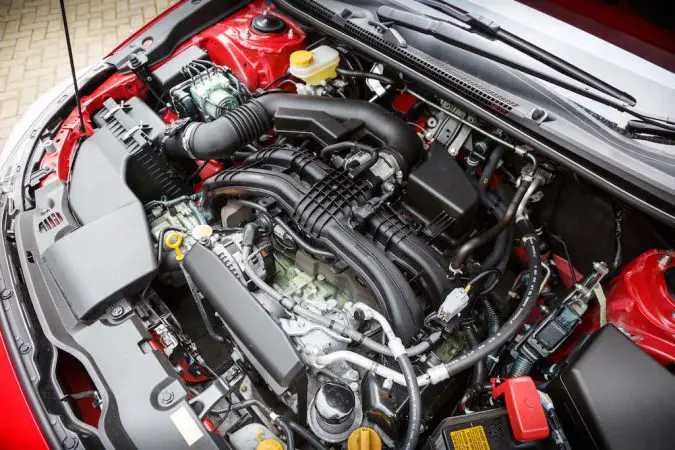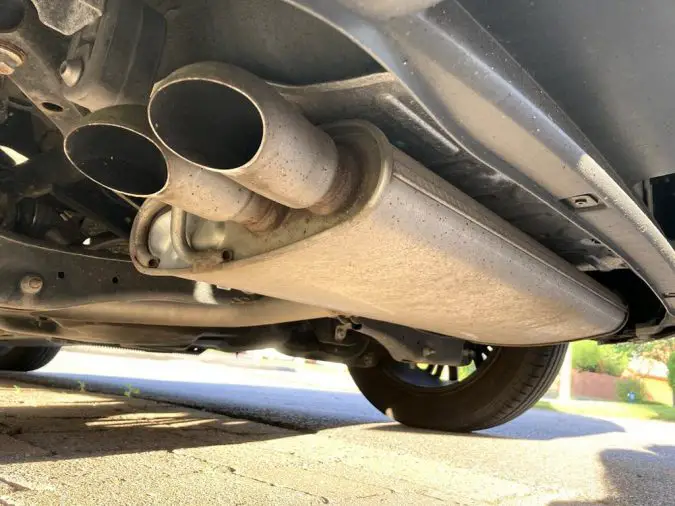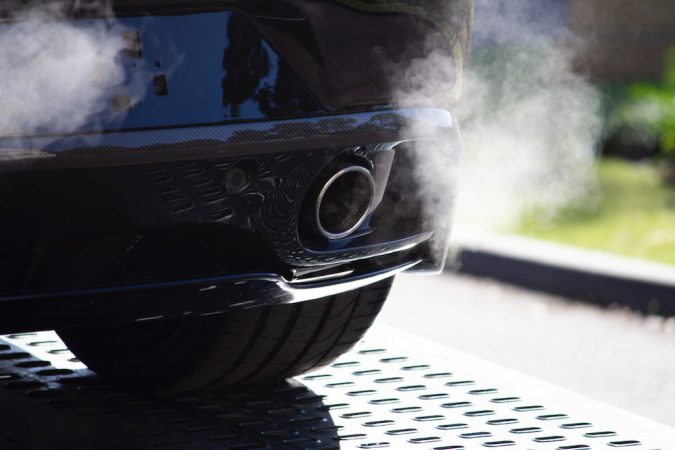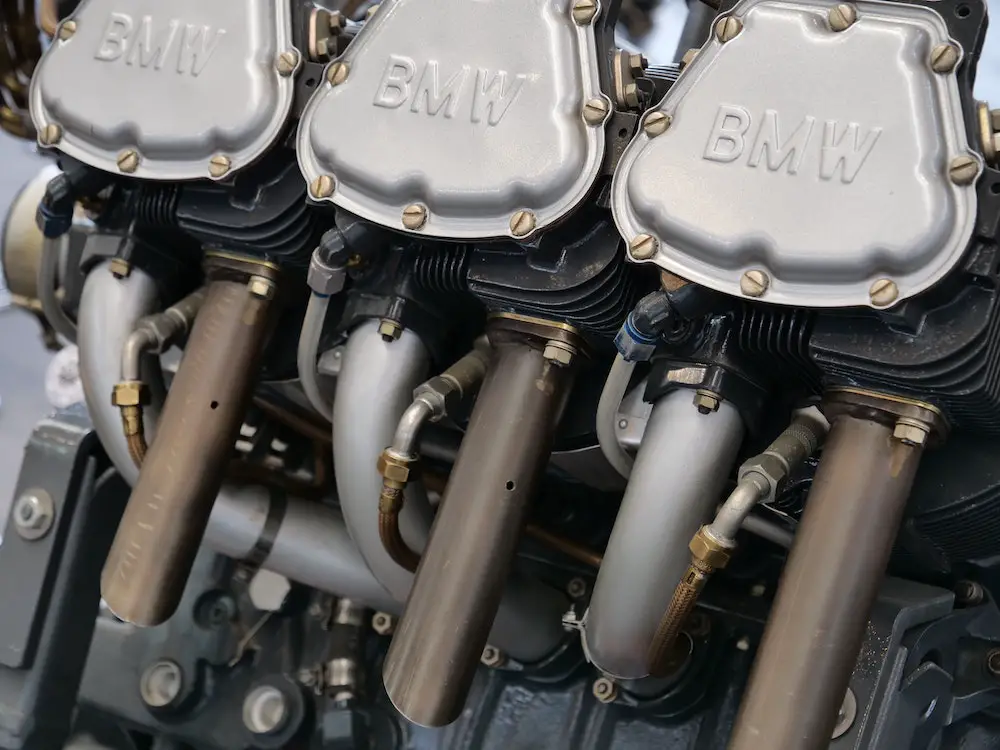Fuel should be burned in a car’s combustion system to create the required energy for the car to function. Toxic gases are produced as a result of the combustion of the fuel. These toxic fumes must exit the vehicle after a little cooling and processing. Are you experiencing an exhaust manifold leak in your car? Here’s what you should know about this problem. Read this article to know more.
The majority of exhaust manifolds are constructed of heavy-duty cast iron or stainless steel. However, owing to high temperatures, a manifold can bend or break over time, leading to an exhaust manifold leak. Exhaust leaks could also occur as a result of faulty manifold gaskets and damaged installation studs.
The exhaust system is in charge of conditioning and filtering the hazardous gases that escape from the combustion system. The treated gases are then released from the vehicle through the exhaust system.
Any leak in the exhaust system might cause gases to return to the car rather than leaving it. If you do not address the backflow of hazardous gases immediately, it might cause serious damage.
In this article, we will explain how a car exhaust system works, what may cause an exhaust manifold leak, how can you repair it, and the related servicing costs.
How Does An Exhaust Manifold Work?
The exhaust manifold is an initial component of the exhaust system in your car. It is linked to the car engine and gathers pollutants from the engine. The exhaust manifold collects the air and fuel combination from the car’s engine’s numerous cylinders. No matter how many cylinders there are, it gathers the air and fuel mixture from each of the cylinders.
The exhaust manifold not only receives all of the consumed engine gases, but it also fully consumes any wasted or incompletely burned gases due to its extremely high temperature.
The manifold also contains the exhaust system’s initial oxygen sensor, which checks the quantity of oxygen going through the system. The oxygen sensor measures the quantity of oxygen in the air and tells the fuel injection system whether to raise or lower the amount of oxygen in the air and the fuel mixture used to supply the engine.
Exhaust headers are used in some cars instead of standard exhaust manifolds. This is especially the case in high-performance vehicles, where increasing horsepower takes precedence above maximum performance.
Headers are intended to have low gas flow limitations, allowing them to remove exhaust quickly through very efficient scavenging. However, based on their design, they can have an effect on torque at low engine speeds. It is possible to substitute an exhaust manifold with a header, but it is uncommon for the converse to be true without severely impacting engine performance.
Technically, the exhaust manifold serves as a funnel, collecting all of the engine’s pollutants. The manifold then releases the pollutants into the remainder of the exhaust system after they are all in one location and thoroughly burned.
How To Find An Exhaust Manifold Leak?
The first step in repairing an exhaust system is determining the source of the problem. Because the exhaust pipe becomes so hot, it might be hard to detect an exhaust leak and pinpoint the source of the problem. If you drove the car around in the last few hours, avoid touching anything near the exhaust system since it can burn your hands. Wait for it to cool down.
Start with a visual examination. Open the hood and look for the exhaust manifold. It is where the exhaust emissions from the vehicle’s engine will discharge. It will most certainly be rusted and will consist of several tubes or one big tube. Look carefully since they may be hidden by a heat shield.

Follow the pipe back underneath the car to the back. Check the pipe for any cracks or areas where it has fractured or separated. As you move back, examine each one of the exhaust ports. One or more catalytic converters, resonators, or even the mufflers could be visible.
Big metal tubes or boxes should be linked all along exhaust piping to form these. Examine each of them for cracks, fractures, or folds.
Other leaks in the exhaust system might mimic the indications of a leaking exhaust manifold. This is why, before trying further repairs, it is critical to confirm that the leak is stemming from the manifold.
Unusual Sounds
You can also do a sound inspection to find an exhaust manifold leak. When you turn the key in the ignition and notice a progressively loud sound emanating from around the engine, this is usually a sign of an exhaust manifold gasket leak.
Keep in mind that a gasket is located between the exhaust manifold pipe and the engine block. The gasket, like the pipe, is continually heated and cooled. If you don’t notice a fracture or leak emanating from the pipe, inspect the gasket to check if it has a defect.
When you place your foot on the gas pedal, try and listen if you can find any strange sounds. If you hear noises like air seeping out or slight whistling, you have a problem.
Most drivers find it difficult to distinguish between distinct engine noises, exhaust noises, or even a vacuum line leak. Focus on when the noises occur exactly. Self-diagnosing would save a lot of time if you can pinpoint the problem before taking a trip to the mechanic.
Unpleasant Odor
Only carbon monoxide is odorless in exhaust fumes. If your exhaust manifold is leaking, you will detect a distinct stench in the air. If the stench continues, it is hazardous exhaust fumes that you do not want to inhale for an extended period.
So, take the car to an auto body shop as soon as possible and have them diagnose and repair the damage. Make sure the windows are open when you drive to the shop. Carbon monoxide can be very fatal, so it’s better to not take any risks.
To determine that the exhaust manifold has collapsed, you might have to remove that in some situations. After removing the manifold, closely check it for hairline fractures that would necessitate replacement.
Mating Surface
Assess the engine and exhaust manifold mating surfaces. On this surface, accumulation or oxidation can develop, or the gasket might rupture and disperse. Check the gasket for black soot patches, which indicate that exhaust gases are leaking through. Bolts in this section can slacken and cause a leak. Leaking in this spot, such as the gasket, is indicated by black soot surrounding the engine’s mating area.
After dismantling the exhaust manifold, we suggest removing and checking any gaskets in this place. Clean that portion of the engine as well as the mating surface on the exhaust manifold upon reinstallation. Finally, swap out the exhaust manifold gasket for a new one.
Check this video for exhaust manifold leak symptoms!
How To Identify A Blown Exhaust Manifold Gasket?
Cracks
A noticeable crack on the exterior of the manifold is one indication of a cracked manifold. Examine the manifold carefully for cracks, paying extra attention to where it attaches to the engine and where the most temperature will be generated.
A large fracture will be easy to find, but a tiny, hair-line split may be harder to find. To check the whole surface, you might have to remove the manifold from its engine compartment.
Screeching Or Hissing Sounds
Exhaust gas and sounds are released at high velocity right from the engine. You can notice it coming from down the exhaust manifold, and then into exhaust pipes, where they flow via the catalytic converter and muffler before finally leaving out the tailpipe. The muffler’s purpose is to decrease the audible noise of the exhaust gases as they exit the engine.
If a manifold gasket fails, exhaust gas would leak through the seal between the manifold and also the cylinder head, leading to a loud boom or pop sound every time that cylinder ignites. This noise is sometimes misconstrued with an engine knock. The subtle screech that surrounds and follows the popping noise distinguishes the two noises. If you hear that screech, the exhaust manifold gasket has likely blown.
Burning Smell
A burning odor from the engine bay is yet another sign of an exhaust manifold issue. Extra heat from the exhaust manifold can harm surrounding electric and plastic parts if there is a problem with the heat shield or even just exhaust leaks.
Exhaust manifolds may reach a temperature of above 900 degrees Fahrenheit, causing any adjacent or touched components to combust. Burned components may emit a plastic burning odor that is occasionally followed by smoke and can cause additional problems; therefore any burning odors should be investigated to ensure that they are not a serious concern.
Inefficient Performance
If the car has an exhaust gasket problem, it will start to influence the efficiency of the engine. You would fail to speed up as quickly as usual. Even the power generated from the engine would feel depleted. If you continue to neglect the issue, it would only become worse as more time passes.
Fuel Efficiency
When the car’s power and acceleration lessen, so does its fuel efficiency. To get the car to behave normally in the absence of an exhaust problem, it must work harder, consuming more fuel. You might very well believe that replacing or repairing the exhaust is expensive.
But if you do not get it fixed as soon as possible, the money would go elsewhere. Lower fuel efficiency means more refilling. That would cause you to spend unnecessary money on gas.
How To Fix An Exhaust Manifold Leak?
A leak in the exhaust manifold gasket is a reasonably simple car repair. If you believe your car has a damaged exhaust manifold gasket, the very first thing you should do is open the car’s bonnet. If you detect an oily liquid coating the engine, the problem is most likely a gasket leak.

Precautions
After you’ve determined the source of the problem, unplug the wires from your engine’s battery and allow for it to cool down. After it has cooled down, apply the parking brake to the vehicle and use a car jack stand to elevate the placement of the vehicle.
While raising your car is not required, it will make things much easier since most exhaust manifold gaskets are only attainable from below a vehicle. When you’re certain that the car is cool enough to touch, you may start working on repairs.
If you have been driving the car before, don’t engage in the repairs immediately. Let it cool down for a few hours.
Take Apart The Manifold
Exhaust manifold gaskets are firmly attached to the cylinder head of an engine. They’re often securely fastened on there, so you would need certain tools to get them away. So whip out your toolbox before getting started.
Once you’re beneath the car, use certain tools to remove any covers or shields that are obstructing your view of the exhaust manifold gasket. Once you’re confident that you can see the exhaust manifold gasket, brush it with penetrating oil. Lube the bolts that link the exhaust manifold with the exhaust pipe flange as well. Allow the oil to rest for several minutes after spraying before proceeding.
When the components have had some time to absorb the oil, remove the exhaust manifold screws using a tool. Be mindful as to not exert too much strain. The bolts should be quite easy to move. Excessive pressure may lead them to fracture or break. However, if you are having difficulty, you may use a hammer to further accelerate the process.
When the bolts are loose, remove the exhaust manifold. Remove the defective gasket and put the manifold in a secure area. Remove the old gasket and wipe the exhaust manifold using brake cleaner. This chemical will aid in the removal of any carbon accumulation or corrosion that has built up over time.
Replace The Gasket
Before installing the replacement gasket, check the exhaust manifold for any damages. If everything appears to be in order, install the replacement gasket onto the exhaust manifold. The exhaust manifold may then be reinstalled in the vehicle.
Just keep in mind that all the bolts are in their proper places. It’s a good idea to keep note of where each bolt goes as you remove it. To ensure that the engine works perfectly, each bolt must be installed precisely. It would be terrible to believe the process was finished only to discover a problem with the repair when you attempted to start the car.
Check the flange where the manifold attaches to the engine. It is common when there is no gasket when the manifold was dismantled. The manufacturing is reliant on super flat surfaces joining to one another.
Additional Tips
If a leak has formed, have the manifold face resurfaced by a skilled machine shop. In combination with the resurfacing, use an upgraded gasket. Even if the manifold is in excellent condition, the mating surface on the head might be fractured. This problem will be resolved by installing a new gasket.

Remove broken manifolds and replace them with new ones, or have them fixed. Welding is frequently used to repair small fractures in expensive manifolds. The manifold must be preheated in an oven before welding with proper equipment. Although it is not cheap, it is the absolute cheapest choice for high-end automobiles with pricey parts. After the adjustments are done, reinstall the manifold.
An exhaust manifold gasket leak can cause significant engine damage. If the contaminated gases escape from the exhaust manifold, they may poison other areas of the engine. This might cause the engine to behave adversely or emit a foul odor. Fortunately, you can simply repair the gasket leak on your own. You can effectively resolve this issue if you have the proper tools.
How Much Does It Cost To Fix An Exhaust Manifold Leak?
Minor exhaust manifold leaks and fractures can be sealed shut or fixed. Big cracks, on the other hand, will need very thorough restoration. It should be noted that this is still deemed a short-term solution. If the leak or crack is deemed too serious during the manifold check, the structural stability of the system is jeopardized. Under these conditions, a professional technician should repair the exhaust manifold.
In the car industry, maintenance expenses are separated into two categories: components costs and labor costs, which are defined by the number of hours required. The labor cost varies greatly depending on where the repair is performed. You can take the car to a dealership or a local mechanic.
On average, repairing an exhaust manifold leak would take around two to three hours. The typical labor cost per hour is within $100. So, repairing the exhaust manifold leak should cost between $150 and $300 in labor only.
The figure can rise to $350 if you wish to fix the manifold leak at a dealership, where labor cost is a little higher.
If you can repair it yourself, then you would save a lot of money. But it is not advisable unless you know what you are doing.
The other costs, such as the car components, depending on the car itself. The prices will vary depending on the car brand, model, year, and how many cylinders there are in the motor.
In the end, the cost of repairing an exhaust manifold leak can vary from anywhere between $20 (if you do it yourself) to up to $400 (at a dealership).
Is It Safe To Drive To With An Exhaust Manifold Leak?
When the exhaust system fails to function properly, additional heat enters the engine. The catalytic converter may be damaged as a result of this. Because a malfunctioning catalytic converter is quite costly to replace, it is advisable to get the exhaust fixed before further harm can be done to the car’s operations.
Driving with an exhaust manifold leak can be hazardous since the gases include carbon monoxide. An exhaust leak could reduce gas mileage, forcing the engine to push extra and requiring you to refill the petrol tank more often. If the gas pedal rattles when driving, this is an indication that the exhaust is leaking.
A coolant gasket leak, on the other hand, may be repaired. Stop-leak fluids are marketed as lasting seals by manufacturers and merchants. This spares you big bucks in repairs and lets you drive the car indefinitely.
An overly noisy engine is one of the first signs of an exhaust manifold gasket issue. An exhaust leak caused by a defective exhaust manifold gasket would sound like a whistling or rapping sound emanating from the engine. The sound may be particularly audible at a cold start or upon acceleration.
If you’ve been driving with an exhaust leak for quite some time and suddenly notice the car sounds like somebody is rattling a box of pebbles while you’re idle, it might be an indication that the catalytic converter is failing. This indicates that you have delayed much too long to have your exhaust system examined, and you should have it done much sooner.
Exhaust Manifold Leak: Symptoms, Causes, and Repair
- The exhaust manifold collects harmful gasses from the car’s engine and directs them to the catalytic converter, which converts them into less harmful gases that release into the air.
- An exhaust manifold leak can cause harm to the car and be dangerous to your health.
- Signs of an exhaust manifold leak include a noisy engine, exhaust smells in the car, reduced fuel efficiency, poor vehicle acceleration, and a check engine light.
- An exhaust manifold leak can be caused by thermal stress, worn-out gaskets, or broken bolts and studs.
- A leaking exhaust manifold should be repaired or replaced as soon as possible to avoid putting your health at risk, causing more damage to other car parts, or increasing fuel consumption.
- An exhaust manifold leak may release harmful and odorless carbon monoxide into the car, which can cause serious and lasting damage and be deadly.
- If you notice an exhaust manifold leak sign, consider having the vehicle towed to the repair shop instead of driving it any farther.
- The leak can cause more damage over time to other parts of the car, such as the exhaust valves, oxygen sensors, or catalytic converter.
- A pro can quickly identify and remedy the problem of an exhaust manifold leak.
- A trusted local auto repair shop should repair or replace a leaking exhaust manifold immediately to avoid harming the car and your health.
Conclusion
If an exhaust manifold leak is not repaired promptly, it may be extremely harmful to the engine. A leaky exhaust manifold gasket can result in a burnt exhaust valve, causing exhaust from the combustor to flow backward into the intake manifold.
The leak can be caused by several things – a leak in the gasket, the bolts, or maybe the manifold itself. A leak in the exhaust manifold can be detected by sensing any burning odor, unusual noises, or apparent leaks in the exhaust system. Look out for any of these symptoms to pick on any exhaust issues. The sooner you can find the problem, the faster its repairs would be.
Repairing the leak yourself may save you a great deal of money on labor and reduce the repair cost drastically. But, if you lack the appropriate mechanic knowledge, you risk causing major damage that will cost you far more than the initial repair. So tread carefully.

